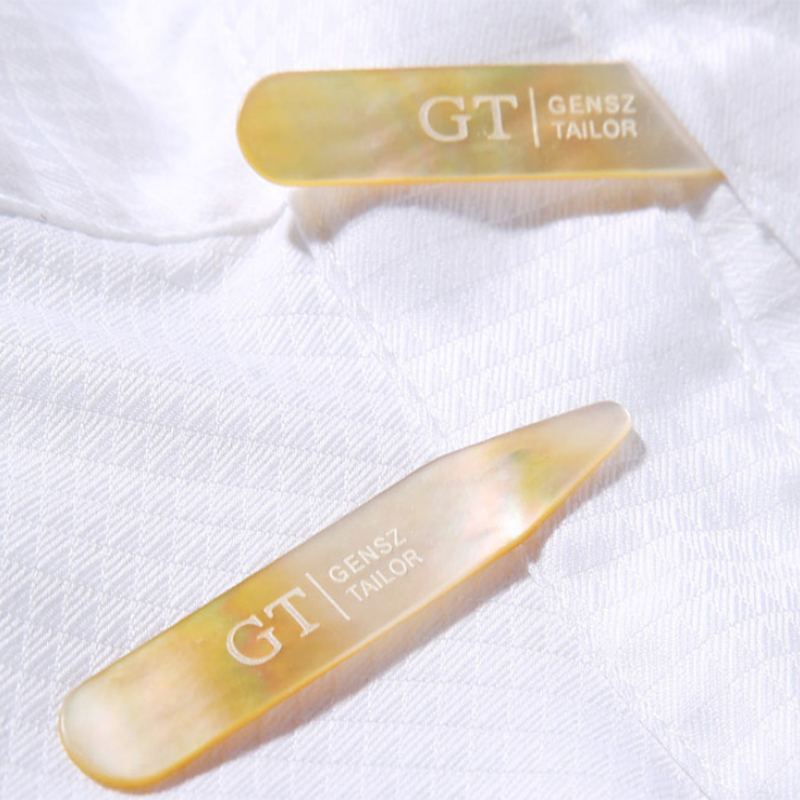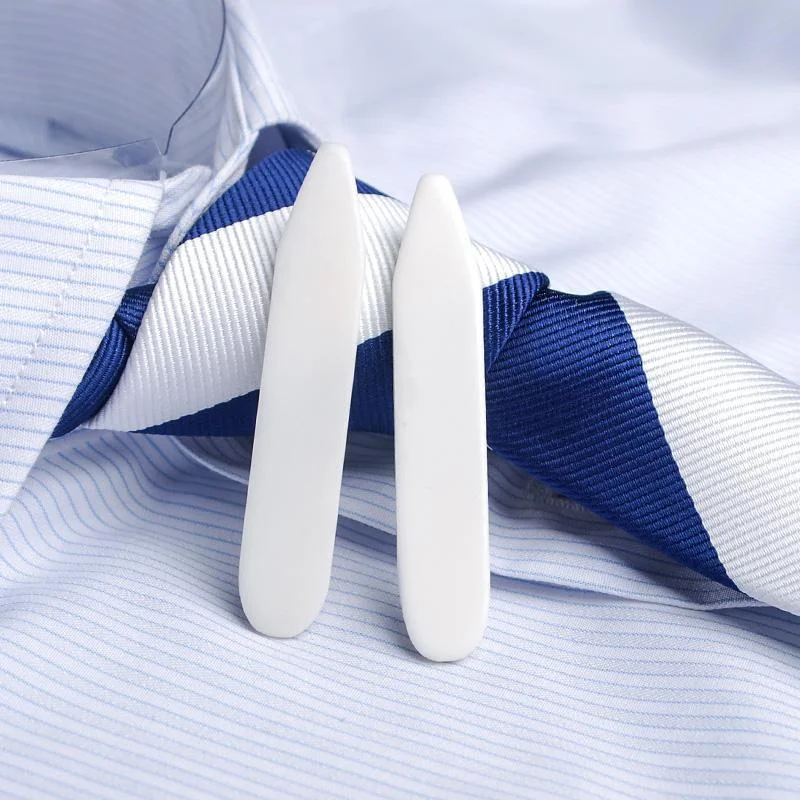How to Polish Mother of Pearl Shells?
Many shell enthusiasts struggle with revealing the hidden beauty of mother of pearl. Common polishing mistakes often damage delicate nacre layers, resulting in dull finishes and wasted materials.
Mother of pearl shells can be professionally polished by removing the outer layer using progressive sandpaper grits, followed by buffing compounds and finishing waxes. The process requires patience and proper technique to reveal the iridescent nacre beneath without damaging the shell’s natural structure.

Yellow raw mother of pearl shells

Yellow mother of pearl shells after polishment

chinese raw mother of pearl shells before polishment

chinese mother of pearl shells after polishment
Mother of pearl, or nacre, is the iridescent inner lining found in many mollusk shells, most notably abalone, pearl oysters, and various freshwater shells. While these shells may appear rough and unremarkable on the outside, proper polishing techniques can transform them into stunning decorative pieces with vibrant, rainbow-like luster. This guide will walk you through everything you need to know about polishing these natural treasures.
Can Mother of Pearl Shells Be Polished?
Many collectors hesitate to work with their shells, fearing irreversible damage. Understanding the shell structure is essential for confident polishing.
Yes, mother of pearl shells can be successfully polished. Their structure consists of an outer periostracum (protein layer), prismatic layer (calcite), and inner nacreous layer (aragonite platelets). By carefully removing the outer layers and polishing the nacre, you can reveal the shell’s natural iridescence and enhance its optical properties.
Understanding Shell Structure and Polishing Potential
Mother of pearl shells have specific characteristics that make them suitable for polishing:
| Shell Layer | Composition | Characteristics | Polishing Considerations |
|---|---|---|---|
| Periostracum | Protein (conchiolin) | Outer protective layer, often brown/dull | Must be completely removed during polishing |
| Prismatic Layer | Calcium carbonate (calcite) | Middle layer, chalky texture | Requires gradual removal without damaging nacre below |
| Nacreous Layer | Calcium carbonate (aragonite) | Inner iridescent layer (mother of pearl) | Target layer to expose and enhance through polishing |
The unique optical properties of mother of pearl result from its microscopic structure. The nacreous layer consists of tiny aragonite platelets arranged in a brick-like pattern with organic material between them. This structure diffracts light passing through it, creating the characteristic iridescence that makes these shells so desirable.
Different shell species offer varying polishing potential. Abalone shells typically provide the most dramatic results due to their naturally thick nacre layer and vibrant coloration. Pearl oyster shells (Pinctada species) also polish exceptionally well, offering a more subtle but elegant appearance. Freshwater mussel shells can also be polished, though their nacre layer is often thinner and requires more delicate handling.
The age and condition of the shell also impact polishing results. Older shells that have been exposed to the elements may have naturally worn outer layers, sometimes making polishing easier but potentially showing weathering damage. Fresh shells typically have intact protective layers that require more initial work to remove but often yield superior final results.
What’s the Usage of the Polished Mother of Pearl Shells?
Without clear application ideas, even beautifully polished shells might go unused. Knowing potential uses motivates proper polishing efforts.
Polished mother of pearl shells serve numerous decorative and functional purposes. They’re commonly used in home décor as standalone display pieces, incorporated into furniture inlays, used in aquarium decorations for both aesthetic appeal and calcium supplementation, and transformed into unique jewelry, buttons, or musical instrument embellishments.

chinese mother of pearl shell swan
Practical and Decorative Applications
Polished mother of pearl shells find their way into numerous applications:
| Application Category | Specific Uses | Benefits | Considerations |
|---|---|---|---|
| Home Décor | Display pieces, bowl fillers, tabletop arrangements | Natural elegance, each piece unique | Best displayed away from direct sunlight to prevent fading |
| Interior Design | Furniture inlays, bathroom tiles, decorative panels | Luxury appearance, natural materials trend | Requires sealing when used in humid environments |
| Aquarium Decoration | Natural habitat elements, calcium source | Aesthetic appeal, practical benefits for aquatic life | Must be thoroughly cleaned and prepared for aquatic use |
| Craft Projects | Jewelry components, wind chimes, ornaments | Unique handcrafted items, gift potential | Drill holes carefully to prevent cracking |
| Musical Instruments | Guitar inlays, instrument decoration | Traditional craftsmanship, visual distinction | Professional application recommended for valuable instruments |
Home décor represents one of the most popular applications for polished mother of pearl shells. Their natural beauty makes them ideal standalone display pieces in coastal or nature-inspired interior designs. When arranged in glass containers or decorative bowls, they create striking visual elements that introduce organic texture and subtle iridescence to any space.
The aquarium industry values polished mother of pearl shells not only for their aesthetic contribution but also for practical benefits. As these shells gradually dissolve in water, they release calcium carbonate, which helps maintain water hardness and provides essential minerals for invertebrates and certain fish species. The iridescent inner surfaces also reflect light beautifully in aquarium environments, creating dynamic visual effects.
Furniture makers and interior designers incorporate mother of pearl elements for their unique visual properties and connection to traditional craftsmanship. Inlaid work featuring thin sections of polished shell creates distinctive patterns that have been valued in luxury furniture for centuries. Modern applications include bathroom surfaces, decorative panels, and even lighting fixtures that leverage the material’s translucent and reflective qualities.
Artisans and jewelers transform polished shell fragments into unique accessories, combining them with metals, woods, and other materials to create one-of-a-kind pieces. The durability of properly finished mother of pearl makes it suitable for items that receive regular handling, though care should be taken to protect it from harsh chemicals and extreme conditions.
The Methods of Polishing Mother of Pearl Shells
Many polishing attempts fail due to improper technique or tools. A systematic approach yields professional results even for beginners.
The most effective polishing method involves a progressive process: first cleaning the shell thoroughly, then removing the outer periostracum using coarse sandpaper (180-220 grit), gradually working through finer grits (400, 800, 1200, 2000), buffing with polishing compound, and finally applying protective wax. This methodical approach preserves the shell while maximizing its natural luster.
Professional Polishing Techniques
The step-by-step process for achieving optimal results:
| Polishing Stage | Tools/Materials | Technique | Key Considerations |
|---|---|---|---|
| Initial Cleaning | Warm water, soft brush, mild soap | Gentle scrubbing to remove debris | Avoid harsh chemicals that can damage nacre |
| Outer Layer Removal | Sandpaper (180-220 grit), sanding block | Even pressure, work in circular motions | Focus on removing periostracum without over-sanding |
| Progressive Sanding | Sandpaper (400, 800, 1200, 2000 grit) | Sand with each grit until previous scratches disappear | Keep shell wet during sanding to prevent dust and overheating |
| Initial Buffing | Felt buffing wheel, tripoli compound | Medium speed buffing, keep moving to prevent heat buildup | Maintain even pressure across surface |
| Final Polishing | Soft buffing wheel, white diamond compound | Light pressure, focus on bringing out shine | Clean thoroughly between compound changes |
| Finishing | Carnauba or microcrystalline wax | Thin application, buff to high shine | Provides protection and enhances luster |
The initial preparation stage is critical to successful polishing. Before beginning the abrasive process, shells should be thoroughly cleaned to remove any organic matter, sand, or debris. Soaking in warm (not hot) water with a mild detergent helps loosen surface contaminants. For stubborn deposits, a soft brush can be used, taking care not to scratch the surface unnecessarily.
The most challenging aspect of the process is removing the outer periostracum layer that obscures the nacre beneath. This requires patience and careful technique with coarser sandpaper (typically 180-220 grit). Because shell surfaces are curved and irregular, many professionals prefer wet sanding by hand rather than using power tools for this initial stage. The shell should be kept wet during sanding to prevent dust and reduce heat buildup that could damage the nacre.
The progressive sanding stage is where true transformation begins. Working methodically through increasingly finer grits (400, 800, 1200, and finally 2000) gradually removes scratches from previous stages and begins to develop the surface shine. Each grit should be used until scratches from the previous grit are completely removed. This patience is rewarded in the final result—shortcuts during this stage inevitably show in the finished piece.
For buffing, a standard rotary tool or bench grinder fitted with felt or fabric buffing wheels is commonly used. The key technique involves keeping the tool moving to prevent heat buildup while maintaining even pressure. Starting with tripoli compound provides initial luster, while following with white diamond compound develops a high shine. Between compounds, the shell must be thoroughly cleaned to prevent cross-contamination.
The final waxing stage not only enhances the visual appeal but also provides protection for the polished surface. Natural carnauba wax or specialized microcrystalline wax formulations designed for shell preservation offer the best combination of enhancement and protection. Application should be thin and even, followed by buffing with a soft cloth to develop the final luster.
Professional Tips for Superior Results
Experienced craftspeople recommend several techniques to achieve optimal outcomes:
Stabilize irregular shells by embedding the outer side in plasticine or mounting them temporarily to a wooden block with double-sided tape to provide better control during sanding.
Use progressive wet/dry sandpaper specifically designed for fine finishing, as standard construction sandpaper may be too aggressive for delicate nacre.
Create a sanding bath by working in a shallow container with water to keep the shell consistently wet throughout the process, which improves results and prevents potentially harmful dust.
Check progress frequently under good lighting to identify areas needing additional attention and to avoid over-sanding thin shells.
For commercial applications, maintain consistent techniques across multiple shells to ensure uniform appearance when pieces will be used together in larger projects.
While power tools can speed up the process, hand polishing often yields superior results for valuable specimens, allowing for greater control and sensitivity to the shell’s unique structure. The tactile feedback during hand polishing helps preserve the natural contours and prevent accidental damage to thinner areas.
Conclusion
Polishing mother of pearl shells requires a systematic approach: thorough cleaning, progressive sanding through multiple grits, careful buffing, and protective waxing. When properly executed, this process transforms ordinary shells into lustrous decorative pieces for home décor, aquariums, and craft projects.







